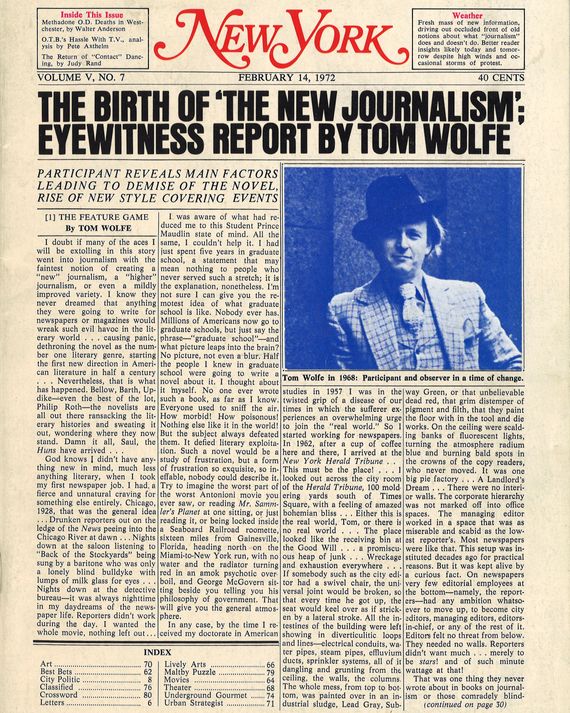News Articles Fundamentals Explained
News Articles Fundamentals Explained
Blog Article
How News Articles can Save You Time, Stress, and Money.
Table of ContentsIndicators on News Articles You Should Know4 Easy Facts About News Articles DescribedNot known Factual Statements About News Articles The smart Trick of News Articles That Nobody is DiscussingThe smart Trick of News Articles That Nobody is Discussing
Great understanding of different topics provides students an one-upmanship over their peers. Although electronic and social networks are easily easily accessible, we should not neglect how crucial it is to read the papers. Moms and dads need to attempt and instill the habit of checking out a paper as an everyday regimen to continue the heritage of the adored print medium.News tales likewise consist of at least one of the following vital attributes family member to the desired audience: distance, prominence, timeliness, human passion, quirk, or effect.
Within these restrictions, newspaper article likewise aim to be detailed. Nonetheless, various other factors are involved, some stylistic and some stemmed from the media type. Among the bigger and a lot more reputable papers, justness and equilibrium is a significant variable in presenting information. Commentary is normally constrained to a different area, though each paper may have a different general angle.
Papers with a global audience, for instance, often tend to make use of an extra official design of creating. News Articles.; typical style overviews consist of the and the US News Design Publication.
7 Easy Facts About News Articles Explained
As a policy, reporters will certainly not utilize a lengthy word when a short one will certainly do. News writers attempt to stay clear of using the exact same word more than when in a paragraph (occasionally called an "echo" or "word mirror").
Headlines in some cases omit the topic (e.g., "Jumps From Watercraft, Catches in Wheel") or verb (e.g., "Feline female lucky"). A subhead (additionally subhed, sub-headline, subheading, caption, deck or dek) can be either a subservient title under the main heading, or the heading of a subsection of the article. It is a heading that precedes the primary message, or a group of paragraphs of the primary message.

Extra billboards of any of these kinds may show up later in the short article (especially on succeeding pages) to tempt additional reading. Such signboards are likewise used as reminders to visit here the post in other areas of the magazine or site, or as advertisements for the piece in various other magazine or sites. Regular framework with title, lead paragraph (recap in bold), various other paragraphs (information) and contact information.

Example of a hard-lead paragraph NASA is suggesting one more area job. The firm's spending plan demand, announced today, consisted of a plan to send an additional goal to the Moon. This time the firm intends to develop a long-lasting facility as a jumping-off place for various other area adventures. The budget demands around $10 billion for the job.
An "off-lead" is the second most crucial front page information of the day. To "hide the lead" is to start the write-up with history details or details of second importance to the viewers, forcing them to check out even more deeply into a post here than they should have to in order to find the important factors.
The Main Principles Of News Articles
Typical use is that one or more sentences each develop their very own paragraph. Journalists normally define the organization or framework of a newspaper article as an upside down pyramid. The important and most fascinating elements of a story are put at the start, with sustaining information complying with in order of diminishing significance.
It permits individuals to explore a topic to just the deepness that their interest takes them, and without the charge of information or subtleties that they can take into consideration unimportant, yet still making that details offered to a lot more interested visitors. The upside down pyramid structure also allows write-ups to be cut to any type of arbitrary length during format, to suit the room readily available.
Some authors begin their stories with the "1-2-3 lead", yet there are numerous kinds of lead available. This format invariably starts with a "Five Ws" opening paragraph (as explained above), adhered to by an indirect quote that serves to sustain a significant aspect of the first paragraph, and afterwards a straight quote to sustain the indirect quote. [] A kicker can describe several things: The last story current program; a "delighted" story to finish the program.
Longer articles, such as publication cover short articles and the pieces that Visit Your URL lead the within areas of a paper, are recognized as. Feature stories vary from straight information in a number of means.
How News Articles can Save You Time, Stress, and Money.
An attribute's initial paragraphs often connect an intriguing minute or event, as in an "unscientific lead". From the details of an individual or episode, its sight swiftly widens to generalizations concerning the tale's topic.

The Editor's Tool kit: A Recommendation Overview for Beginners and Professionals (2001) Allan M. Siegal and William G. Connolly. The New York Times Guidebook of Style and Use: The Official Design Guide Utilized by the Writers and Editors of the Globe's A lot of Authoritative Newspaper (2002) M. L. Stein, Susan Paterno, and R.
Report this page